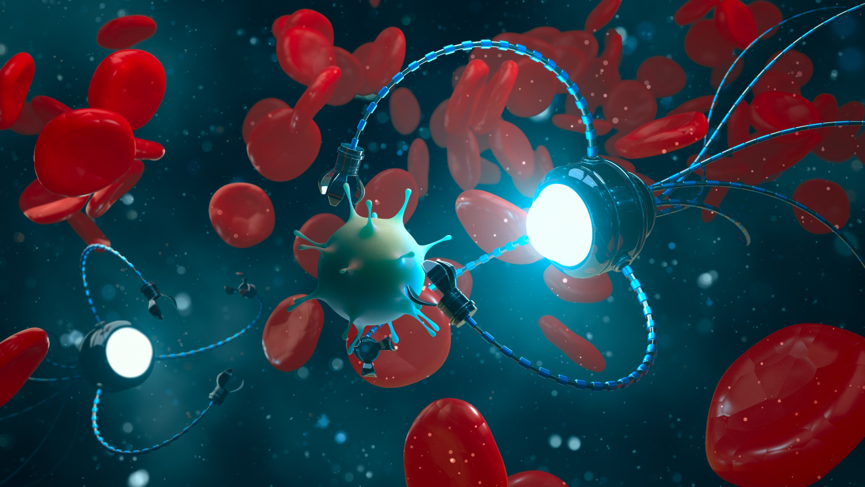
In a recent study, scientists used nanoparticles to deliver a drug for pain, which failed in previous clinical trials, to specific parts of nerve cells, greatly improving its ability to treat pain in mice and rats. The findings are published in the journal Nature Nanotechnology.
“We have taken a drug, an FDA-approved anti-vomiting medication, and used a novel delivery method, improved its efficacy and duration of action in animal models of inflammatory pain and neuropathic pain.” said Dr. Nigel Bunnett, chair of the Department of Basic Science and Craniofacial Biology at New York University (NYU) College of Dentistry and the senior author of the study. “The discovery that nanoparticle encapsulation enhances and prolongs pain relief in animals provides new opportunities for the development of much-needed non-opioid drugs for pain.”
Opioids are a class of drugs used to treat pain, but they have a high risk of addiction and overdose. Moreover, their efficacy diminishes over time, and doses need to be increased to control pain. Side effects of opioids, including constipation and respiratory depression, can worsen with increasing doses.
The author also expressed that there are many reasons why opioids are not suitable for pain. Given the ongoing opioid crisis that has claimed hundreds of thousands of lives, he thought we need safer and more effective alternatives. Bunnett and his colleagues studied a family of proteins called G protein-coupled receptors, which are one-third of clinical drugs. Although it is thought that the receptors act on the surface of nerve cells, they found that activated receptors move inside the cells into a cavity called an endosome. In the endosome, the receptor continues to function for a long time.
“The sustained activity of receptors in endosomes drives pain,” Bunnett explained. He also said that large pharmaceutical companies have plans to develop neurokinin receptor antagonists for chronic diseases, including pain and depression. However, in human trials, the situation has been bad. Therefore, neurokinin receptors is a classic example of failed drug development for pain.
Researchers suspect that these drugs are not working because they are designed to block receptors on the cell surface, not the endosome. To deliver the drug to the endosome, the researchers turned to nanoparticles-microscopic carriers for drug delivery. Bunnett and his colleagues encapsulated a neurokinin receptor blocker called aprepitant in nanoparticles.
The results show that compared to traditional therapies, including opioids, nanoparticles deliver drugs that can treat pain in mice and rats more thoroughly and for longer. In addition, nanoparticle delivery minimizes the amount of drug needed to treat pain, which may be useful to avoid side effects. Researchers are continuing to study the use of nanoparticles in providing non-opioid analgesics, including developing methods to target nanoparticles only to neural cells that feel pain, which will allow the use of smaller doses of drugs for treatment. They are also exploring ways to encapsulate a variety of drugs that block pain receptors to further improve treatment outcomes.
References:
Paulina D. Ramírez-García, Jeffri S. Retamal, Priyank Shenoy, Wendy Imlach, Matthew Sykes, Nghia Truong, Luis Constandil, Teresa Pelissier, Cameron J. Nowell, Song Y. Khor, Louis M. Layani, Chris Lumb, Daniel P. Poole, TinaMarie Lieu, Gregory D. Stewart, Quynh N. Mai, Dane D. Jensen, Rocco Latorre, Nicole N. Scheff, Brian L. Schmidt, John F. Quinn, Michael R. Whittaker, Nicholas A. Veldhuis, Thomas P. Davis, Nigel W. Bunnett. A pH-responsive nanoparticle targets the neurokinin 1 receptor in endosomes to prevent chronic pain. Nature Nanotechnology, 2019; DOI: 10.1038/s41565-019-0568-x .
